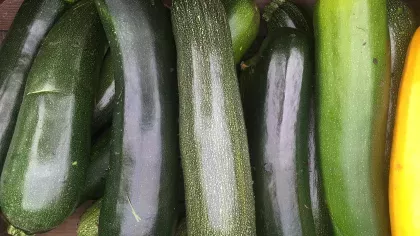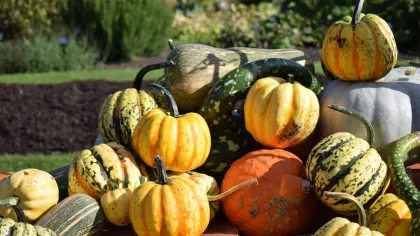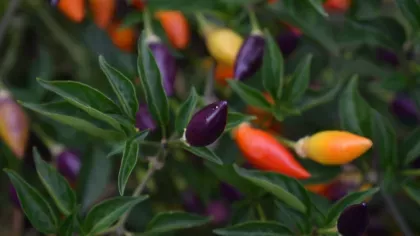8 August 2018
Flower power: Edible flowers in the Kitchen Garden
The edible flower bed at Kew’s Kitchen Garden is flourishing. Horticulture student Olivia Vassilaki tells us more.

What are edible flowers?
Edible flowers are simply flowers that humans can eat safely.
They provide exciting colours and flavours to everyday meals. Flavours vary from cucumber-like to peppery, whilst some don’t have much flavour at all and are purely decorative.
Many of the most commonly-known edible flowers come from herbs, such as lavender, sage, and chamomile.
Most people don’t realise that you can eat the petals of magnolia and tulips too, which just shows the diversity of flowers that we can munch on.
Food trials also suggest that edible flowers contain antioxidant compounds, minerals and anti-inflammatory properties – so some things that look good aren’t bad for you after all!
Looking after the beds
As part of my specialist course in Kitchen Garden Production, these display beds are my responsibility.
I chose to grow ornamental edible flowers to tie the student vegetable plots and the Kitchen Gardens together, whilst still making sure what’s pretty is also useful.
I look after the sowing and planting timetable, and the ground preparation method for the edible flowerbed.
As these beds are changed each year, I’ve tried to stick mainly to annual crops such as cornflowers and basil, but a few plants are perennial, like chives.
We prepared the ground by mulching with Kew's compost in January. The flower bed hasn’t needed further feeding. Once the plants were in the nicely mulched ground they just grew away without any further help.
The bed is great for pollinators. Lots of bees have been attracted to the border. They particularly love the cornflowers and borage.
These flowers aren't hard to grow at home. They're happy to grow in any garden, and almost all could be grown in pots. Perennials like garlic chives are the exception, as they like a bit more space.
What’s more, these flowers are used by our chefs in Kew’s restaurants for big events, to add extra flavour and colour to some of their delicious dishes. In the Orangery for example, they used cornflowers, nasturtiums, basil and borage flowers in salads and garnishes.
Top flowers to grow and eat
Amaranth
Amaranth (Amaranthus tricolour) is a valuable plant to have in the garden, as both the leaves and seeds can be eaten.
The smaller leaves can be eaten like spinach. They’re a good source of Vitamin C and fibre.
After blooming, the tiny red flowers can be harvested for their seed. The seeds can be used whole in cooking and baking, for treats like cereal bars, breads and flapjacks.
The grain is grown as a pseudo-cereal, as it’s not part of the same family as popular grains such as wheat and oats. It’s often used as an alternative to wheat flour as it doesn’t contain gluten.
When cooked the grain contains protein, magnesium, iron and manganese. Cooked Amaranthus leaves also contain calcium, manganese, Vitamin A and Vitamin C.
Amaranth can grow up to 1.2m. The dark pink catkin-like bunches of flowers begin to emerge in July and the grains can be harvested as the tiny flowers turn brown after being successfully pollinated by the wind.
These can be shaken from the plant and collected by hand, or a net bag can be placed over the top of the flowers which catches the seeds.
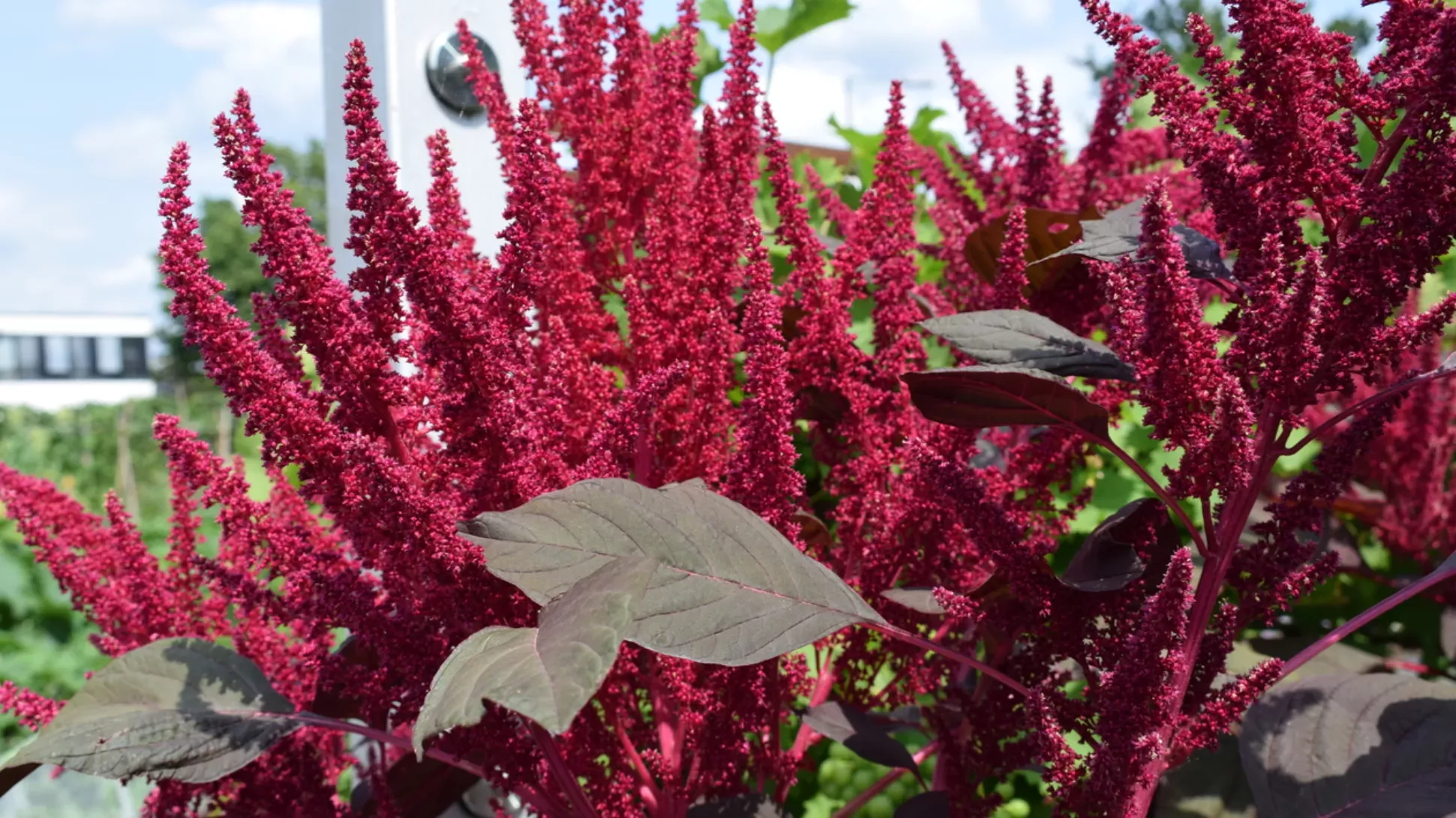
Basil
A popular herb found in many gardens, the tiny flowers of Basil (Ocimum basilicum) are actually just as versatile as the leaves.
The flowers are less intense with their flavour, but the taste is still very recognisable.
Because of this, these flowers are best sprinkled over pasta dishes or salads, or added to butter for melting over potatoes.

Borage
Borage (Borago officinalis) is a classic flowering plant, commonly found in cottage garden borders or framing a decorative vegetable garden.
The blue, star-shaped flowers produced throughout the summer are commonly used in drinks, salads and desserts. The plants can often survive mild winters too.
The flowers are a good source of Vitamin C, which boosts the immune system.
The delicate blooms have a subtle flavour of cool cucumber, so can often pair well with sweet and savoury. They’re most commonly used in Pimm’s.
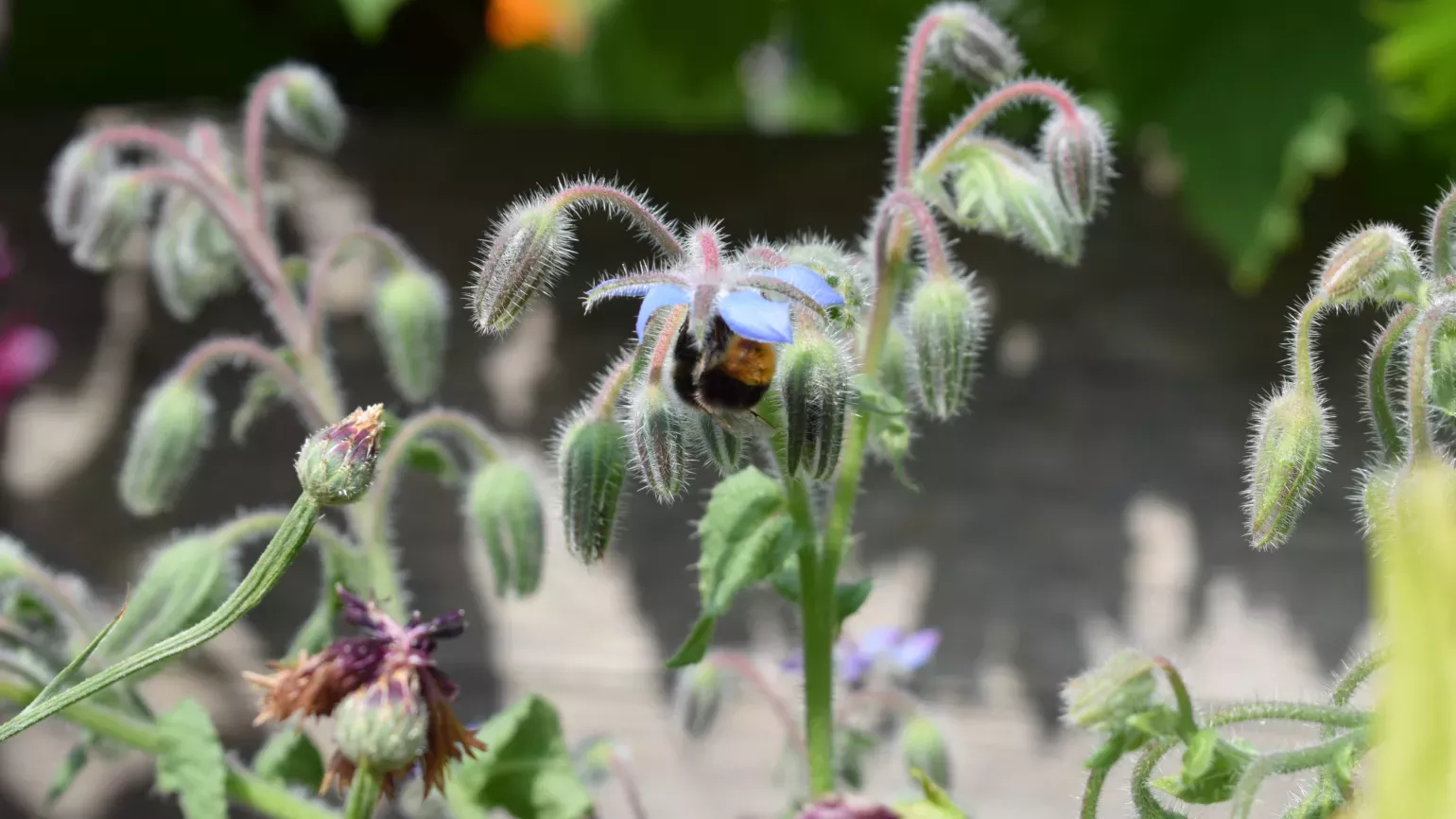
Chives
These are your common garden chives (Allium schoenoprasum). They grow up to 30/40cm with cylindrical, hollow leaves.
The flowers produced are a bright pink, tasting of mild onion/garlic. They’re produced four months after sowing and will continue flowering intermittently throughout summer.
They’re the perfect decoration for any meal flavoured with onion or garlic. Try scattering over pasta, salads or quiches for a colourful twist.

Cornflowers
Cornflowers (Centaurea cyanus) are pom-pom drifts of flowers that bloom throughout summer.
They’re most commonly blue, but in the Kitchen Garden I’ve chosen a mix of pink, lilac and purple.
These flowers have a subtle clove-like flavour to them. Because of this they can be used to decorate salads, but commonly they’re candied and used to decorate cakes and confectionery.
Traditionally, the flowers were used to treat indigestion, and to regulate the kidney and liver.
Often, the petals of cornflowers are dried and used as decorative confetti on top of baked items.
The colours remain bright and can brighten up butter icing on cupcakes, or make meringues more fun with flecks of pinks and blues running through.
Tips on picking and preparing
It’s best to pick edible flowers just before you intend to eat them so they’re still firm and full of flavour, or you can store them in the fridge in a plastic bag.
For the majority of edible flowers, it’s predominantly just the petals that are edible. You should always check if unsure.
Try growing your own edible flowers at home – pop down to our Kitchen Garden today for some inspiration!

